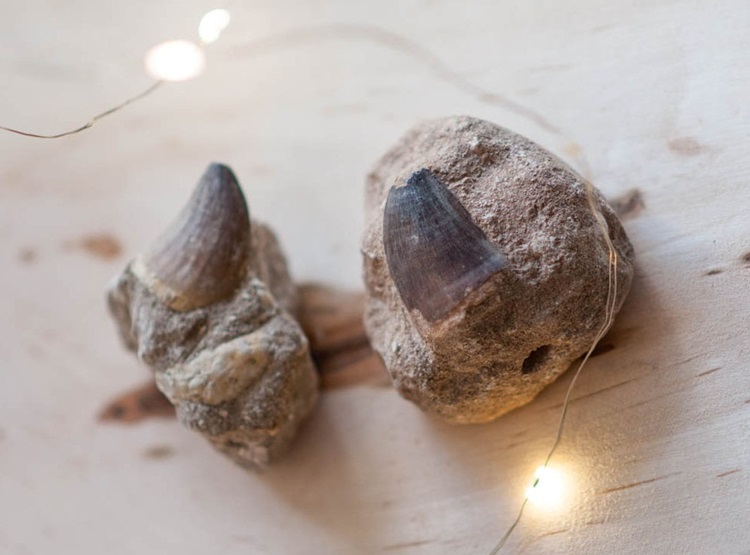Unique Petrified Fossil Collectibles

The universe of fossils offers all collectors an extraordinary number of pieces to choose from. Like art, antiques, and wine, fossils can be precious collection pieces for us. They are physical evidence of preexisting organisms, either plant or animal. Therefore, all fossil types add exquisite pieces to our collection:
- body fossils
- plant fossils
- fossilized shells
- fossilized wood
- fossilized coral
- fossilized algae
- fossilized bones and teeth
- fossilized trunks and roots
We all experience an adventurous thrill facing a piece of fossil that fits in our collection. There's this sense of wonder about the ancient world, a drive to study ancient history, and the passion invested in the act of selecting. By collecting fossils, we can come in touch with our inner child's curiosity about prehistory. Our fossil collection can actively stimulate our children's curiosity and encourage their interest in dinosaurs and the world that existed on Earth long before us.
Body Fossils as Three-Dimensional Imprints of the Past

Body fossils are the remains of dead plants and animals, formed from their hard parts like bones, teeth, shells, woody trunks, and roots. They have various sizes, from tiny living things to gigantic organisms.
The conservation of these remains starts with petrifaction, a process in which living organic materials turn into stones. They can typically be found in sedimentary rocks and volcanic deposits.
The most usual body fossils are of animal origin: bones and teeth. These are the most common and famous fossils collected worldwide, and the most spectacular pieces of prehistoric life to own. Ancient animal remnants are unique pieces to add to your collections:
Plant Fossils Snapshots of the Past Flora

Plant fossils are mainly formed through permineralization when water with dissolved minerals seeps into the cells of decaying plant tissues. The minerals then crystallize and preserve the form of the plant. The results are beautiful petrified fossils that look like rocks and give us details about the life of an ancient plant.
Every plant segment can fossilize, but the most commonly preserved macroscopic plant parts are wood, roots, and leaves. A spectacular example of the permineralization process is the petrified wood, formed by the replacement of wood material with silica.
There are ancient terrestrial plant fossils, such as trunks or roots, and prehistoric marine fossils, such as algae or stromatolite. They can be exquisite pieces of your collections:
Nature's Fossilized Sculptures: Shells

One of the most common fossil samples is the fossilized shell. Seashell fossils are formed when a shelled sea animal dies, the body decomposes, and the hard surface is preserved. Shells fossilize without being dissolved only when buried in sediments with calcium carbonate minerals, like limestones.
One of the most frequently-found sea fossils is extinct mollusk with usually coiled shells. Gastropod fossils also have spiral body covers, like the turban snail. There are sea fossils with non-coiled shells like the brachiopods: marine animals with an upper and a lower body cover, and the cephalopods: relatives of the modern squid, octopus, and Nautilus. Some sea fossils are of the hard calcite shell of ancient marine animals.
Shell fossils can be unique completions of your collection:
- Ammonite
- Orthoceras
- Trilobite
- Shiva Shells
Petrified Wood, a Tree Turned Into Stone

Fossilized wood is a stone with preserved natural wooden texture. It forms when the tree-like plants are buried by sediment and protected from decay due to a lack of oxygen and organisms. Then, the mineral-rich groundwater invades the cavities, and over millions of years, these minerals crystallize within the wood's cellular system. The process forms a fossil that keeps the features of the bark, wood, and cellular structures.
Petrified wood presents various colors and intriguing textures due to different mineral inclusions. It can be of quartz, chalcedony, agate, and opal. Metals such as copper, chromium, cobalt, iron, and manganese give the brightest colors to the petrified wood's structure. The fossil takes on the hues of the minerals that fill its pores:
- brown
- grey
- red
- blue
- yellow
- green
- black
- pink
- orange
Buy Unique Petrified Fossils at the Village Rock Shop
When starting or expanding a fossil collection, buying from a reputable source is vital. We source our fossils directly from the mines and collaborate with dealers who bring high-quality fossils directly to our shop.
As all fossils are unique, there are no two fossils alike. Therefore, each acquisition of a fossil is a particular experience: you connect with them before choosing the ones to buy.
At the Village Rock Shop, you'll find a wide variety of unique fossils. We will gladly assist you in choosing the right ones for your needs. If you can not find the fossils you are looking for on our website, feel free to contact us, we might have those fossils in our store, or we can order them for you.

